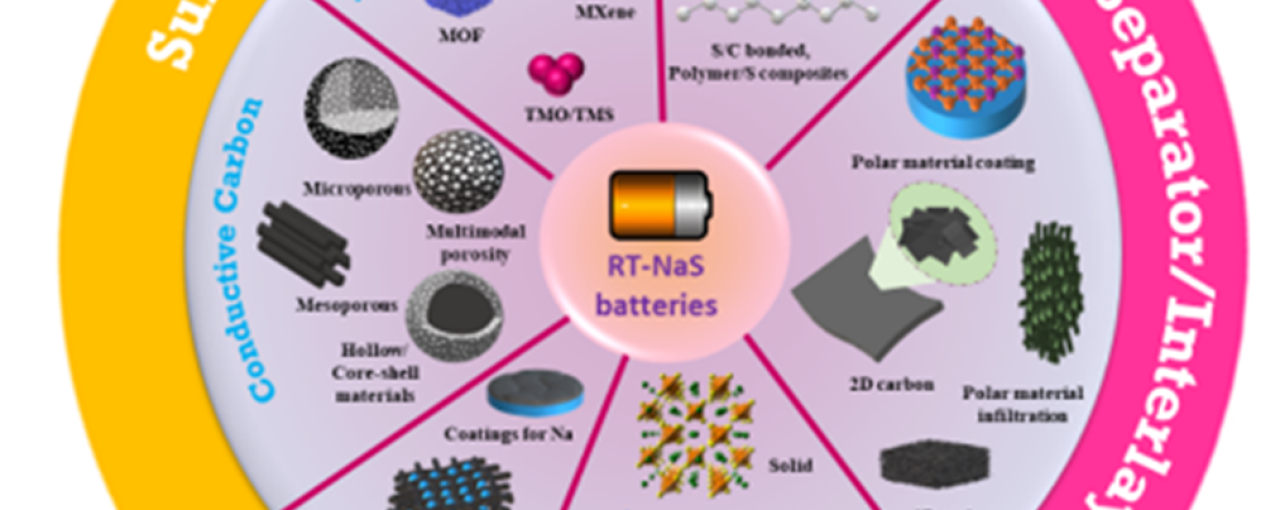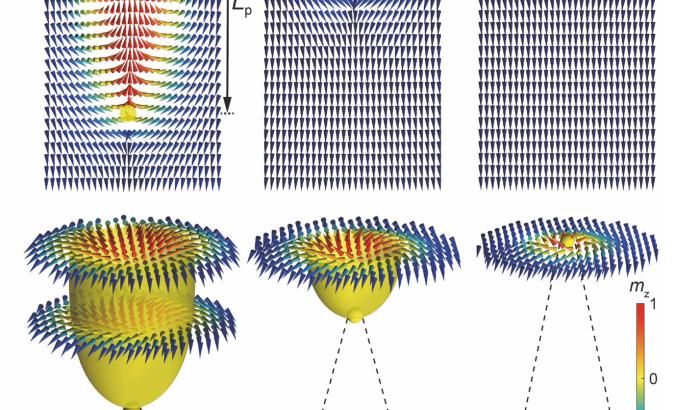Energy storage has become a vital area of research due to the fast depletion of non-renewable energy resources, together with the unprecedented surge in energy demands. Harvesting energy from intermittent energy sources has become intrinsic to ensuring an uninterrupted power supply. Efficient energy storage systems (ESS) requires reliable and efficient high-energy battery systems with long cycle life and low cost. The enormous commercial success of lithium-ion batteries (LIBs) has paved the way for compact and clean energy storage by powering portable electronic devices and electric vehicles. However, their restricted performance and increasing rise in material costs have led to research in next generation battery technologies that are highly desirable for realising efficient ESS in the future.
Two attractive next generation energy storage devices are room temperature sodium-sulfur batteries (RT-NaSBs) and solid-state batteries (SSBs). For RT-NaSBs, sodium and sulfur are widely abundant in the Earth’s crust, environmentally benign, and the sulfur cathode exhibits a high theoretical capacity. However, the dissolution of sodium polysulfide (NaPS) impedes redox reaction kinetics, which leads to rapid capacity decay, poor efficiency, and severe loss of active material. For SSBs, the conventional flammable liquid electrolyte is replaced by a solid-state electrolyte (SSE) material with the potential for higher safety and energy density when using a metal anode. However, the SSE materials still lack well-rounded properties such as exhibiting both ionic conductivity and electrochemical stability.
Researchers at Research Complex at Harwell and Imperial College London have thoroughly reviewed current state-of-the-art experimental strategies in order to address the challenges of RT-NaSBs and machine learning approaches for the discovery of SSE materials for SSBs.
For RT-NaSBs, the approaches include rational employment of catalytic materials for facilitating effective polysulfide transformation, synthesising sulfur-containing materials to push the boundaries of sulfur loading, and novel manufacturing techniques including 3D printing for electrode design.
For SSBs, ML approaches can be used to identify new SSE materials, predict their properties, and gain insights into the electrochemical performance of novel battery chemistries to accelerate material discovery and reduce costs. The machine learning techniques employed in SSE materials discovery and screening include supervised learning, unsupervised learning, reinforcement learning, and neural networks, e.g. a partial least squares regression model to predict activation energy barriers to lithium diffusion in olivine-type materials.
These approaches are reviewed in two new papers published in Batteries to pave the way for employing RT-NaSBs and SSBs to ultimately benefit the society we live in by reducing costs and meeting clean energy demands.





